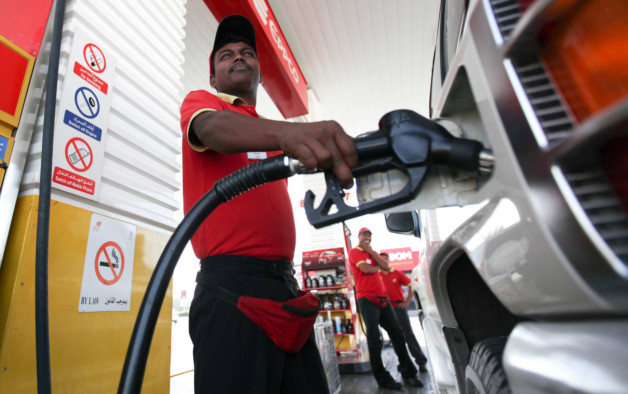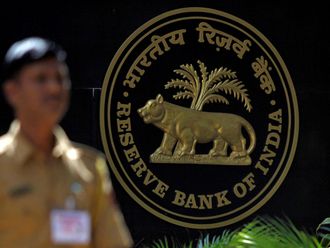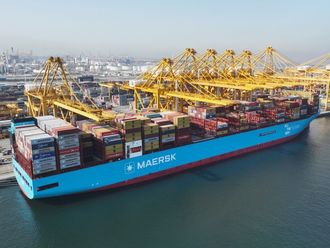
There are many things taken for granted in many different spheres of activity. Without getting unduly metaphysical or wistful on that point, we can safely say, in the field of Gulf economics and business, that the region’s rate of growth, progress in development and living standards, and financial strength derive inordinately from its oil and gas treasure chest, directly or indirectly.
As a report on energy sustainability some years ago by Deloitte put it, for these countries “their bread and butter is the production of fossil fuels”.
Even those states and emirates less endowed with such lucrative reserves can, through the triumph of imagination and commitment, make the most of the GCC’s liquidity to advance their plans, providing outlets for investment and apparent diversification.
A glance at Standard Chartered’s recent study of global trade, with its symbolic barrel of oil dominating and virtually representing the Arabian peninsula, confirms not only the essence of that fact but the extended dependence locally upon these mineral deposits by way of interconnectedness with the rest of the world.
Thus, in these predominantly state-driven economies, both domestic budgeting and international balance of payments and reserves relate substantially back to how the given wealth is exploited.
Indeed, we hear much about oil prices having to be kept, if possible, at the elevated levels of recent years, to match the fiscal breakeven rates that government spending has reached. That’s effectively the frontline of a longer-term challenge for overall financial sustainability.
Pursuing alternatives
It has become familiar territory, though, that increasingly the demand for the Gulf’s trademark oil and gas resources is escalating at home, slowly draining the exported excess. That conundrum has been exercising the minds of both general and specialist analysts for some time, inviting the attention paid to pursuing alternatives.
Just as Europe, for example, has reason to focus on the costs, practicability and (these days) geo-strategic sensitivities of its energy reliance, and, in the Middle East, Egypt recurrently suffers electricity outages, so even the Gulf is encountering the insatiable appetite of growing populations and (energy-intensive) industrial ambitions.
Dipping into the research on the combined topic of financial pressures and the supply of power necessary to the region’s economic and social upkeep reveals just how much work needs to be done.
A report by brokers Markaz last year foresaw power demand in the overall Mena region growing at an expected 7 per cent over the next decade, with some $280 billion (Dh1.03 trillion) to be invested in the sector in the next five years.
As a symptom pointing towards that broader prognosis, Deloitte observed that GCC residents “may well become outright leaders [globally] in per capita residential electricity use”. Others have suggested that the climate change outlook will only intensify these kinds of issues.
Energy conservation
Researchers at think-tank Chatham House noted that “several GCC government officials have publicly recognised that current energy consumption patterns are bad for the economy”, with an intensity of use relative to GDP generated that is a statistical outlier, i.e. exceptional. They further noted the IMF’s assessment of Gulf government energy subsidies as absorbing roughly 10-30 per cent of state revenues, “more than is being spent on either health or education”. Hence the validity of programmes designed to promote energy conservation and efficiency, policy integration, improved governance, and renewables.
As to relieving the financial pressure upon governments across the region — given the emerging constraints mentioned — to deliver the necessary utilities, in water as well as power, it has become plain that the involvement of the private sector, with its natural pursuit of investable projects, is a vital component.
Ali Aissaoui, senior consultant at APICORP, says, however, that investment is still lagging since the onset of the global financial crisis, “and the resulting shortfall in electricity supply could impede economic growth and exacerbate social frustrations … with recurring incidents of system overloads, particularly during the summer air conditioning peak”.
Soaring project costs
In the absence of demand- or pricing-oriented reform, analysis points to an aggregate capacity increment of 156 GW for 2015-2019, he says, corresponding to an average annual rate of capacity growth of 8.3 per cent. Factoring in the associated investment in transport and distribution raises the total amount of capital required for the Mena power sector to nearer $320 billion.
Equally, the costs of energy projects per se have been soaring, following a crisis-related blip.
Investment of the necessary scale will not be forthcoming without supportive policies, says Ali Aissaoui: (a) to encourage private investment into the power generation sector, (b) to furnish stable and affordable fuel options, and (c) to increase state budget funding of public utilities, which have become the investors of last resort.
These would seem to remain difficult challenges. Indeed, “Mena governments may not be able to bridge the funding gap”. While the GCC may not be the most exposed on that front, it still puts a premium on creating an enabling environment for business to make the crucial difference.












